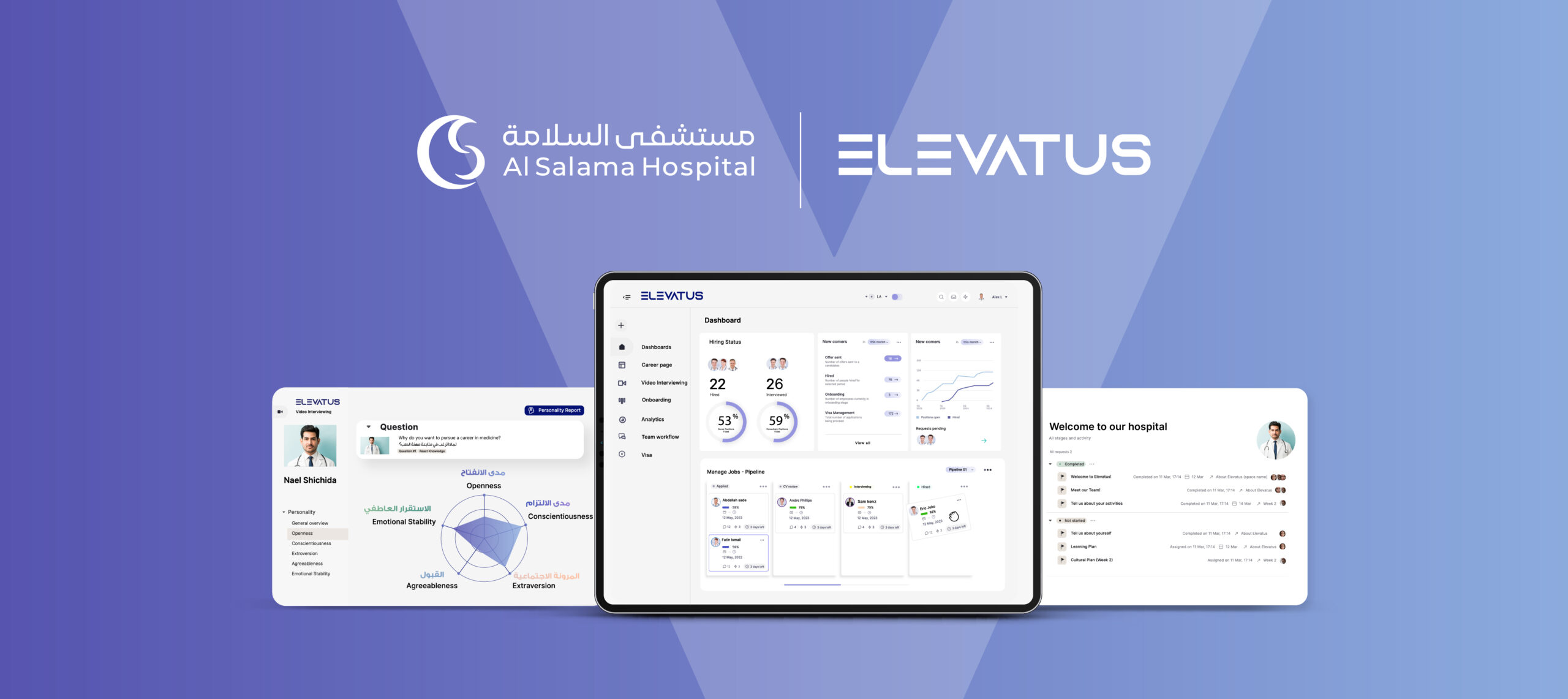
General
The High Cost of a Slow Hiring Process: 5 Hidden Pitfalls You Cannot Ignore!
March 15, 2023



Kiran Kazim
Content Writer
The hiring process is a crucial part of any company’s growth, and delays in this process can have severe consequences. A slow hiring process not only causes frustration and fatigue for recruiters but also puts the quality of hires at risk. The dangers of a slow hiring process become even more apparent when a company is in a period of rapid growth or facing increased competition.
Imagine a real-life scenario where a growing tech company is struggling to hire skilled engineers to meet the growing demand for its products. The CEO knows that hiring new talent is essential to keep up with the competition and sustain growth. However, the hiring process is slow, and the company is losing out on business and opportunities while existing employees are overworked and burned out.
Not to mention, a slow hiring process can have hidden dangers that go beyond recruitment delays. In this blog, we’ll explore the impact of a slow recruitment process on company culture, revenue, and employee morale. We’ll also provide practical tips for speeding up the process without compromising the quality of hires.
Join us as we dive into the high cost of a slow hiring process and the steps you can take to avoid these pitfalls!
Hire the right candidates faster
Easily collaborate with your team to evaluate candidates, gather feedback, and decide who’s the best fit, with our award-winning recruiting software.
Request a demoThe High Cost of a Slow Hiring Process: Why You Can’t Afford to Waste Time


As a business owner or HR professional, it’s easy to get caught up in the day-to-day operations of your organization. But if you’re not paying attention to your hiring process, you could be putting your company at risk.
A slow hiring process can have serious consequences, from missed deadlines and lost revenue to decreased employee morale and increased turnover rates. In fact, according to a study by the Society for Human Resource Management, the average time to fill a job vacancy is 36 days!
More importantly, a slow hiring process can also negatively impair your company culture and reputation. Candidates who are left waiting for weeks or months for a decision may lose interest in your company or share their negative experience with others.
Are you tired of waiting months for a job offer? Do you feel like you’re stuck in limbo during the hiring process? Well, you’re not alone. A slow hiring process has become a common problem for both job seekers and companies. As a result, in this blog post, we’ll explore what constitutes a slow hiring process, the reason behind it, and the dangers that come with it.
What Constitutes a Slow Hiring Process?


A slow hiring process is one that takes an excessive amount of time to move a candidate through the hiring pipeline. It could be due to various reasons, such as a lack of communication, too many decision-makers involved, or outdated hiring practices.
Generally, the hiring process should take no longer than 4-6 weeks. It needs to be effortless, painless, and above all, seamless. Anything beyond that, and it becomes an inconvenience for all parties involved. A slow hiring process can be frustrating for candidates who are left wondering if they are still being considered for the role. It can also impact the company’s ability to attract top talent and ultimately impact the business negatively. In addition to potentially turning off top talent, it can also create inefficiencies that lead to wasted time and resources.
Imagine a recruiter who spends countless hours sifting through resumes and conducting interviews, only to have the process drag on for weeks or even months. Not only can this lead to burnout and demotivation, but it can also detract from other important tasks that they could be working on.
Why is the Hiring Process So Slow?
One of the fundamental reasons is that companies want to make sure they hire the right person for the job. They may want to conduct multiple rounds of interviews or assessments to ensure the candidate has the right skills, cultural fit, and experience.
However, this is where the hiring process can get bogged down. Too many rounds of interviews can be time-consuming, and candidates may lose interest in accepting the offer altogether. Another factor that can contribute to a slow hiring process is a lack of urgency from the hiring team. If there is no sense of urgency, the hiring process can drag on for months, ultimately wasting your valuable resources and time.
Boost your applicant tracking process
Move faster on a platform that automates admin tasks; from posting jobs to sending electronic offer letters. Elevatus helps you use AI and automation to become great at hiring.
Automate your hiringThe Pitfalls Of A Slow Hiring Process
It’s a tale as old as time: the hiring process can sometimes move slower than a snail on a lazy Sunday afternoon! While there may be legitimate reasons for the delay, it’s important to keep in mind the potential consequences of a prolonged process.
Let’s talk about the not-so-fun consequences that come along with taking your sweet time to fill an open position.
First up, missed business opportunities! It’s like playing a game of musical chairs, but instead of chairs, it’s top-notch candidates. If you take too long, a competitor can come in and snatch up that A+ player you’ve been eyeing for your team – it’s a major setback that can leave your business scrambling to catch up.
Speaking of such a situation, a slow hiring process can really put a damper on employee morale. When your current staff has to pick up the slack, it can lead to burnout and, well, resentment. Let’s face it, no one likes feeling overworked and undervalued!
Now, let’s talk about money. A slow hiring process can be a costly mistake. The longer a position goes unfilled, the more money your company loses in lost productivity and potential revenue. And if you need to bring in a recruiter to help speed things up, that’s even more money out the door.
But wait, there’s more! If you take too long to hire, the best candidates might start accepting job offers from your competitors. Why? Simply because they have unique skills and experience that can help your company stay competitive in the market. And losing out on them could really hurt your bottom line.
Last but not least, a slow hiring process can tarnish your company’s image. Internally, it can lead to frustration and dissatisfaction among employees. Externally, it can make your company look disorganized and unprofessional, which can make it harder to attract top talent in the future.
So, got a slow hiring process? Let’s speed things up! Finding the right balance between thoroughness and efficiency is key. By doing so, you can attract top talent, avoid missed opportunities, and ultimately, improve your bottom line.
Slow Hiring: The Hidden Costs and How They Add Up
Hiring the right talent is essential for any organization’s success, but the process can be time-consuming and costly. From the initial job posting to the final interview, there are numerous steps involved, each with its own set of challenges. Unfortunately, many companies don’t realize the true cost of a slow hiring process until it’s too late.
Direct Costs: The Price Tag of Finding the Right Talent
One of the most obvious costs of a slow hiring process is direct financial expenses. These expenses can include advertising costs, recruitment fees, and other expenses associated with finding the right candidate.
For example, let’s say your company is looking to fill a mid-level position in the United States, and you decide to work with a recruiter. The recruiter charges a fee of 25% of the candidate’s first-year salary, which is $50,000. This means you’ll be paying $12,500 in recruitment fees alone. If it takes six months to fill the position, you’ll also be losing out on six months of productivity, which we’ll explore in the next section. Of course, these numbers may vary depending on the country and the specific salary scale of the position in question.
Indirect Costs: Lost Productivity and Decreased Revenue
The longer a position remains vacant, the more productivity is lost. Not only does this mean that existing employees have to take on additional work, but it also means that important projects may be put on hold. This can lead to missed deadlines, decreased morale, and increased stress levels, all of which can have a significant impact on overall productivity.
Let’s go back to our earlier example. If it takes six months to fill the mid-level position, and the employee is expected to generate $150,000 in revenue each year, that’s a loss of $75,000 in potential revenue. If the position remains vacant for a year, the loss doubles to $150,000.
Real-World Examples: The Cost of a Slow Hiring Process
There are plenty of real-world examples of companies that have experienced the negative impact of a slow hiring process. One such example is the case of Google, which had a notoriously long and complex hiring process. In 2017, the company revealed that its hiring process could take up to six months, which was longer than the industry average. This led to increased costs, decreased productivity, and missed opportunities.
Another example is the case of Zappos, an online shoe retailer. The company announced that it was eliminating job postings and replacing them with a new recruiting process that focused on finding the right culture fit. The new process was designed to speed up the hiring process and reduce turnover, which had been a significant problem for the company. By focusing on culture fit, the company was able to reduce the time it took to fill positions, which led to increased productivity and revenue.
Final Thoughts


A timely hiring process is crucial for organizations to avoid hidden dangers and costs associated with a slow hiring process. From decreased productivity to a negative impact on employer branding, the consequences can be severe. However, organizations can take steps to improve their hiring process by leveraging EVA-REC, the award-winning hiring platform.
By using EVA REC, organizations can streamline their hiring process and improve their recruitment efficiency, leading to better hires and, ultimately, increased business success. So don’t wait any longer; start using EVA-REC today to recruit better and hire faster!
Turn top talent to employees fast
Hire, assess, onboard and manage top talent for every job. See how Elevatus streamlines everything; from acquire to new hire.
Request a demoAuthor



Kiran Kazim
Don't miss a thing!
Stay one step ahead. Subscribe and get the latest updates, news, and insights from Elevatus straight to your inbox.







